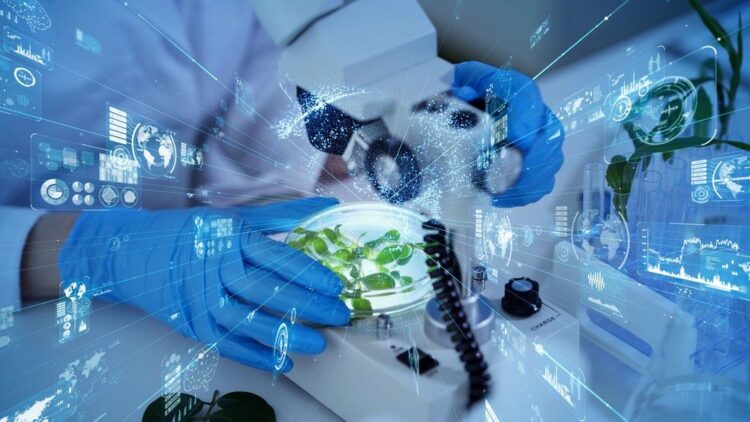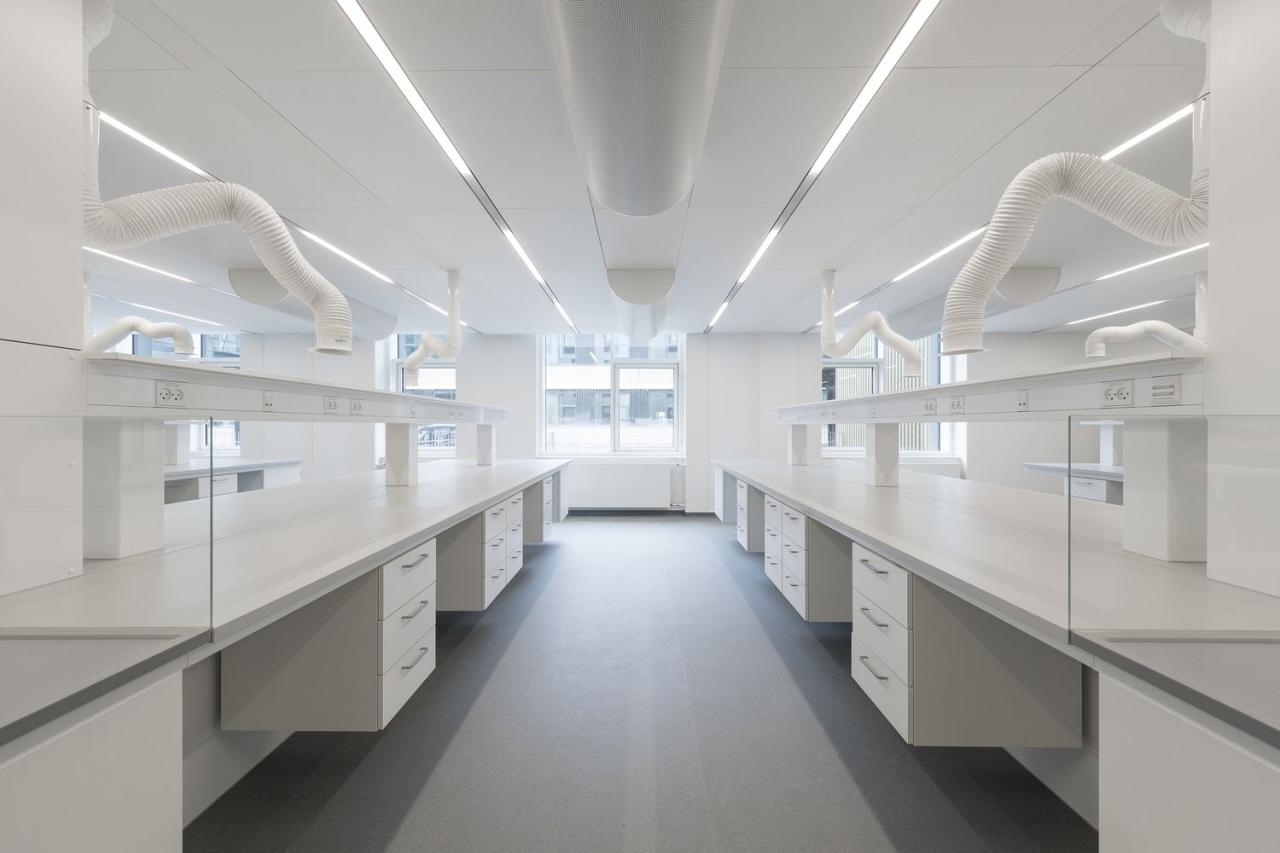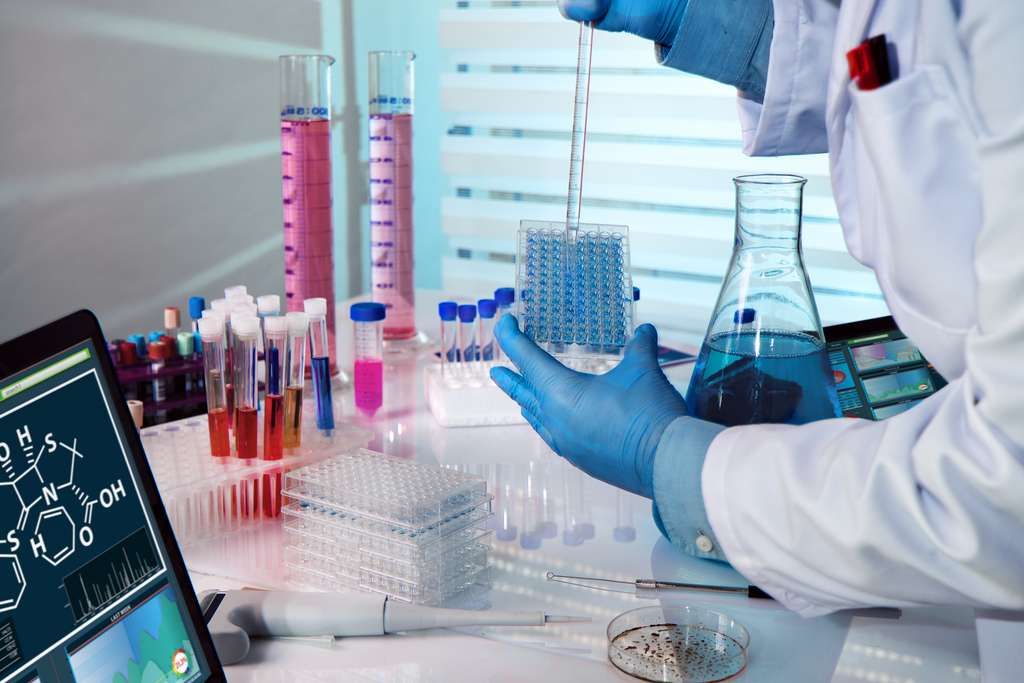The landscape of life sciences is undergoing an unprecedented transformation, driven by the convergence of biology, engineering, and computation. At the forefront of this revolution are sophisticated bio-engineering platforms, integrated systems of tools, technologies, and methodologies that enable scientists and engineers to design, build, test, and manipulate biological systems with unparalleled precision and scale. These platforms are propelling us beyond traditional lab experiments, allowing us to engineer cells for therapeutic purposes, synthesize complex biomolecules, create novel diagnostic tools, and even design entirely new life forms. They are the engines of progress, fundamentally reshaping drug discovery, healthcare, agriculture, and environmental sustainability, truly representing a monumental leap in life sciences progress.
Engineering Meets Biology
To fully grasp the significance and potential of bio-engineering platforms, it’s crucial to understand the historical context and the inherent limitations of traditional biological research, which lacked the systematic, design-driven approach that engineering offers.
A. The Era of Traditional Biological Research
For centuries, biological research primarily relied on observation, experimentation, and a largely trial-and-error approach. While highly successful in unraveling fundamental biological mechanisms, this approach faced inherent challenges when attempting to design or predictably manipulate complex living systems.
- Complexity and Variability: Biological systems are notoriously complex, with myriad interacting components and non-linear behaviors. This inherent complexity made it difficult to predict outcomes or isolate specific causal factors. Furthermore, biological variability between individuals or even within the same organism posed significant experimental challenges.
- Labor-Intensive and Manual: Many biological experiments were (and still are) highly labor-intensive, requiring manual pipetting, cell culturing, and microscopic analysis. This limited throughput, increased the potential for human error, and made large-scale studies impractical.
- Limited Predictability: Without a strong engineering framework, predictably designing a biological system to achieve a specific function (e.g., a cell to produce a new protein, a microorganism to clean up pollutants) was extremely challenging. Researchers often relied on serendipity and extensive iterative testing.
- Slow Iteration Cycles: The time required to grow cells, conduct experiments, and analyze results meant that design-build-test cycles were often very slow, hindering rapid innovation.
- Ethical and Safety Constraints: Working with living organisms, especially pathogens or genetically modified entities, always carried inherent ethical and safety concerns, necessitating strict containment and regulatory oversight.
B. The Rise of Bio-Engineering: A Design-Driven Approach
The emergence of bio-engineering marked a profound paradigm shift, applying engineering principles—such as modularity, standardization, quantification, and systematic design—to biological systems. This interdisciplinary field integrates biology with electrical, mechanical, chemical, and computer engineering.
- Quantitative and Predictive: Bio-engineering seeks to move beyond qualitative observations, focusing on quantitative measurements and building predictive models of biological behavior. This allows for more precise manipulation and forecasting of outcomes.
- Design-Build-Test-Learn Cycle: At its core, bio-engineering adopts the iterative engineering design cycle. Researchers design biological components or systems (e.g., DNA sequences, protein structures), build them (e.g., synthesize DNA, engineer cells), test their function, and then learn from the results to refine future designs.
- Automation and High-Throughput: To overcome the limitations of manual processes, bio-engineering emphasizes automation, robotics, and high-throughput screening methods, enabling experiments to be conducted at massive scales.
- Synthetic Biology: A key sub-discipline of bio-engineering, synthetic biology, focuses on designing and constructing new biological parts, devices, and systems, as well as redesigning existing natural biological systems for useful purposes. This is analogous to designing electronic circuits from standard components.
- Genomic Engineering: The development of powerful gene-editing tools like CRISPR-Cas9 has revolutionized the ability to precisely modify genomes, enabling targeted genetic interventions and the creation of engineered organisms with desired traits.
This engineering-driven approach is what now fuels the development and power of modern bio-engineering platforms, transforming biology from a purely descriptive science into a truly constructive and predictive one.
Core Components and Characteristics of Bio-Engineering Platforms
A comprehensive bio-engineering platform is a sophisticated ecosystem of interconnected technologies and methodologies, designed to facilitate the complex design-build-test-learn cycle for biological systems.
A. Advanced Omics Technologies
The foundation of understanding and manipulating biological systems lies in comprehensive data generated by ‘omics’ technologies.
- Genomics and Next-Generation Sequencing (NGS): High-throughput sequencing of DNA and RNA provides the complete genetic blueprint of organisms, enabling identification of genes, mutations, and expression patterns critical for engineering.
- Proteomics: The large-scale study of proteins, their structures, functions, and interactions, which are the primary workhorses of cells.
- Metabolomics: The systematic study of small molecule metabolites in cells, tissues, or organisms, providing insights into metabolic pathways and cellular state.
- Bioinformatics and Computational Biology: Essential for processing, analyzing, and interpreting the massive datasets generated by omics technologies, identifying targets for engineering, and building predictive models.
B. High-Throughput Automation and Robotics
To achieve the necessary scale and precision, bio-engineering platforms heavily rely on automation.
- Liquid Handling Robotics: Automated systems that can precisely dispense, mix, and transfer microliter volumes of liquids, essential for preparing experiments, drug screening, and DNA assembly.
- Automated Cell Culture Systems: Robots that manage the growth, maintenance, and manipulation of cell lines, ensuring consistency and reducing contamination risks.
- High-Throughput Screening (HTS): Robotic systems coupled with sensitive detection technologies (e.g., plate readers, microscopes) to rapidly test thousands or millions of samples (e.g., drug candidates against targets, engineered cell variants for desired traits).
- Automated Sample Preparation: Robotic workstations for preparing samples for downstream analysis, such as nucleic acid extraction or protein purification.
C. DNA Synthesis and Assembly Technologies
The ability to write new genetic code is fundamental to synthetic biology and genetic engineering.
- High-Throughput DNA Synthesis: Technologies that can rapidly and cost-effectively synthesize custom DNA sequences of varying lengths, from small oligonucleotides to entire genes or even genomes.
- DNA Assembly Methods: Techniques (e.g., Golden Gate, Gibson Assembly, BioBrick) that allow researchers to stitch together multiple DNA fragments into larger, functional genetic constructs with high precision and efficiency.
- Genome Writing: Advanced platforms are moving towards the ability to synthesize entire genomes, opening new frontiers for designing organisms from scratch.
D. Gene Editing Tools (CRISPR and Beyond)
The precision manipulation of existing genomes is a cornerstone of modern bio-engineering.
- CRISPR-Cas Systems: Revolutionary gene-editing tools that allow for highly precise, targeted modifications to DNA sequences, enabling gene knockouts, insertions, and corrections.
- Base Editing and Prime Editing: Newer CRISPR-derived technologies that allow for single-base changes or larger insertions/deletions without breaking the DNA double helix, offering even greater precision and fewer off-target effects.
- Delivery Systems: Technologies for efficiently delivering gene-editing components into target cells (e.g., viral vectors, nanoparticles, electroporation).
E. Cell Engineering and Biomanufacturing Capabilities
The ultimate goal of many bio-engineering efforts is to engineer living cells or organisms to perform specific functions.
- Cell Line Development: Platforms for rapidly developing and optimizing cell lines (e.g., mammalian cells, yeast, bacteria) for specific applications, such as producing therapeutic proteins or vaccines.
- Bioreactors and Fermenters: Scalable systems for culturing engineered cells or microorganisms under controlled conditions to produce desired biomolecules or materials in large quantities.
- Downstream Processing: Technologies for purifying and isolating the desired products from the cell culture, critical for therapeutic or industrial applications.
- Cellular Reprogramming: Techniques for transforming one cell type into another (e.g., induced pluripotent stem cells – iPSCs), opening new avenues for regenerative medicine.
F. Advanced Computational Tools and AI/ML
The sheer complexity and data intensity of bio-engineering necessitate sophisticated computational power.
- Computational Design Tools: Software for designing proteins, enzymes, genetic circuits, and metabolic pathways, often using physics-based simulations or machine learning.
- AI/ML for Data Analysis: Algorithms for extracting insights from large biological datasets, predicting gene function, identifying drug targets, and optimizing experimental parameters.
- Predictive Modeling: Building models to forecast how engineered biological systems will behave in different environments or under various conditions.
- Digital Biology Platforms: Integrated software environments that connect design tools, experimental data, and simulation models, creating a ‘digital twin’ of biological systems.
Transformative Advantages of Bio-Engineering Platforms
The integration of these advanced components within bio-engineering platforms is unlocking unparalleled capabilities, leading to profound benefits across scientific research, industry, and society.
A. Accelerating Drug Discovery and Development
Bio-engineering platforms are fundamentally transforming the laborious and costly process of bringing new medicines to market.
- High-Throughput Screening: Rapidly testing millions of compounds against disease targets or engineered cell lines, dramatically accelerating lead identification.
- Personalized Medicine: Designing and manufacturing cell therapies (e.g., CAR T-cells), gene therapies, or biopharmaceuticals tailored to an individual patient’s genetic makeup, optimizing efficacy and minimizing side effects.
- Target Identification and Validation: Using ‘omics’ data and computational biology to precisely identify novel disease targets and validate their role through genetic manipulation.
- Biologics Production: Efficiently engineering cells (e.g., CHO cells, yeast) to produce complex therapeutic proteins (e.g., antibodies, insulin, vaccines) at large scale with high quality.
- Accelerated Pre-clinical Testing: Using organ-on-a-chip technologies (engineered microphysiological systems) as alternatives to animal testing, providing more human-relevant data and speeding up pre-clinical phases.
B. Revolutionizing Sustainable Manufacturing and Materials
Bio-engineering platforms are enabling the production of chemicals, materials, and fuels through environmentally friendly biological processes, moving away from fossil fuel dependency.
- Biofuels Production: Engineering microorganisms to efficiently convert biomass into sustainable biofuels, reducing reliance on fossil fuels.
- Bioplastics and Biodegradable Materials: Designing microbes to produce novel biopolymers and biodegradable plastics, addressing the global plastic waste crisis.
- Sustainable Chemical Production: Engineering microorganisms to produce high-value chemicals (e.g., industrial enzymes, fine chemicals, fragrances) using renewable feedstocks, replacing energy-intensive and polluting chemical synthesis methods.
- Circular Economy Solutions: Developing biological systems for upcycling waste products or extracting valuable resources from wastewater, contributing to a circular economy.
C. Advancing Regenerative Medicine and Gene Therapy
The ability to engineer cells and tissues is opening new frontiers in treating diseases and repairing damaged body parts.
- Gene Therapy Development: Precisely editing genes to correct genetic defects causing diseases like cystic fibrosis, sickle cell anemia, or certain cancers, offering curative treatments.
- Cell Therapies: Engineering immune cells (e.g., CAR T-cells for cancer) or stem cells for therapeutic purposes, enabling targeted treatments with high specificity.
- Tissue Engineering and Organoids: Growing functional tissues or organ-like structures (organoids) in vitro for disease modeling, drug testing, and potentially for future transplantation.
- Disease Modeling: Creating human-relevant disease models using engineered cells or organoids, providing better platforms for understanding disease mechanisms and testing therapies.
D. Enhancing Agricultural Productivity and Food Security
Bio-engineering platforms offer solutions for more sustainable and productive agriculture, addressing global food security challenges.
- Crop Improvement: Genetically engineering crops for enhanced yield, disease resistance, pest resistance, improved nutritional value (e.g., Golden Rice), and increased tolerance to environmental stresses (drought, salinity).
- Sustainable Fertilizers and Pesticides: Engineering soil microbes to fix nitrogen more efficiently (reducing the need for chemical fertilizers) or produce natural biopesticides.
- Cellular Agriculture: Producing animal-based proteins (e.g., lab-grown meat, dairy) directly from cell cultures, offering a more sustainable and ethical alternative to traditional livestock farming.
- Rapid Disease Diagnostics: Developing fast, accurate, and portable diagnostic tools for detecting plant and animal diseases in the field, preventing widespread outbreaks.
E. Driving Environmental Remediation
Bio-engineering provides innovative solutions for tackling environmental pollution.
- Bioremediation: Engineering microbes to degrade pollutants (e.g., oil spills, plastics, heavy metals) in soil and water more efficiently.
- Carbon Capture: Designing biological systems (e.g., engineered algae or bacteria) that can more effectively capture and convert atmospheric carbon dioxide into useful products.
- Biosensors for Pollution Detection: Developing genetically engineered microorganisms or biomolecules as highly sensitive biosensors for detecting environmental toxins or contaminants.
Challenges and Ethical Considerations in Bio-Engineering Platform Adoption
Despite the immense promise, the widespread adoption and advancement of bio-engineering platforms face significant technical, regulatory, and ethical hurdles that must be carefully navigated.
A. Biological Complexity and Predictability
While bio-engineering aims for predictability, biological systems remain inherently complex and often defy precise engineering.
- Unforeseen Interactions: Modifying one part of a biological system can lead to unexpected, off-target effects or complex downstream interactions that are difficult to predict or control.
- Robustness and Stability: Engineered biological systems can sometimes be unstable, losing their desired function over time, particularly in complex environments. Ensuring their long-term robustness is a challenge.
- Scalability from Lab to Industry: Many promising bio-engineering solutions that work well in a lab setting face significant challenges when scaled up for industrial production, encountering issues with yield, contamination, and cost-effectiveness.
B. High Costs and Accessibility
The development and operation of cutting-edge bio-engineering platforms are currently very expensive, limiting their accessibility.
- Capital Investment: Building state-of-the-art automated labs, high-throughput screening facilities, and advanced computational infrastructure requires substantial capital investment.
- Specialized Expertise: Operating these platforms demands highly specialized expertise in molecular biology, genetics, robotics, bioinformatics, and data science, leading to a shortage of skilled personnel.
- Drug Pricing and Equity: For therapeutic applications, the high cost of developing and manufacturing advanced cell and gene therapies raises significant questions about affordability, access, and equitable distribution, potentially exacerbating healthcare disparities.
C. Regulatory Frameworks and Public Acceptance
The rapid pace of innovation in bio-engineering often outstrips the development of appropriate regulatory frameworks, leading to uncertainty and public apprehension.
- Evolving Regulations: Regulators (e.g., FDA, EMA, EPA) are continuously grappling with how to assess the safety, efficacy, and environmental impact of novel bio-engineered products (e.g., gene therapies, genetically modified organisms, lab-grown meat). The lack of clear, harmonized global regulations can hinder market entry.
- Ethical Concerns: Bio-engineering, especially gene editing in humans or the creation of novel organisms, raises profound ethical questions about human intervention in nature, unintended consequences, and the definition of life itself. Public discourse and acceptance are critical for responsible development.
- Public Perception and Trust: Misinformation or a lack of understanding can lead to public mistrust and resistance to bio-engineered products, even those with clear benefits. Transparent communication and education are crucial.
D. Data Management and Bioinformatics Infrastructure
The sheer volume and complexity of data generated by bio-engineering platforms (genomic sequences, proteomic profiles, metabolic data, robotic experimental results) present significant challenges.
- Data Storage and Processing: Requiring massive, scalable cloud or on-premise infrastructure for petabytes of biological data.
- Bioinformatics Expertise: A critical shortage of bioinformaticians capable of designing and implementing the algorithms and pipelines needed to analyze, interpret, and extract actionable insights from this data.
- Data Standards and Interoperability: Lack of universal standards for biological data formats and metadata can hinder data sharing and integration across different platforms and institutions.
E. Cybersecurity Risks and Intellectual Property
The increasing digitization of biology introduces new vulnerabilities.
- Cybersecurity of Biological Data: Protecting sensitive genetic and health data from breaches and cyberattacks is paramount.
- Biosecurity Concerns: The potential misuse of bio-engineering capabilities for harmful purposes (e.g., creating bioweapons) necessitates robust biosecurity measures and ethical safeguards.
- Intellectual Property (IP) Challenges: Patenting biological sequences, engineered cells, or complex biological processes can be legally complex and contentious, impacting investment and collaboration.
Best Practices for Leveraging Bio-Engineering Platforms Effectively
To maximize the benefits of bio-engineering platforms and navigate their complexities, a strategic and responsible approach is paramount, integrating scientific rigor with ethical foresight.
A. Embrace an Interdisciplinary Approach
Bio-engineering is inherently interdisciplinary. Foster strong collaboration among molecular biologists, geneticists, biochemists, computer scientists, engineers (chemical, electrical, mechanical), data scientists, and ethicists. Encourage cross-training and shared understanding across these diverse fields to build truly integrated platforms and solutions.
B. Prioritize Data Infrastructure and Bioinformatics
Recognize that data is the core asset. Invest heavily in robust data infrastructure capable of handling massive biological datasets (e.g., secure cloud storage, high-performance computing clusters). Develop or acquire sophisticated bioinformatics pipelines and analytical tools to process, annotate, integrate, and extract actionable insights from omics data and experimental results. Data quality and governance are paramount.
C. Implement Automated Design-Build-Test-Learn Cycles
To accelerate discovery and optimization, design your bio-engineering workflows around highly automated, iterative Design-Build-Test-Learn (DBTL) cycles. This means integrating:
- Computational Design Tools: For in silico biological design.
- Robotic Automation: For high-throughput building and testing of biological constructs.
- Advanced Analytics and AI/ML: For learning from experimental results and informing subsequent design iterations. This systematic approach drastically reduces human intervention and accelerates research.
D. Focus on Modularity and Standardization
For synthetic biology and genetic engineering, adopt principles of modularity and standardization. Design biological parts (e.g., promoters, genes, terminators) that can be easily combined and interchanged, similar to electronic components (e.g., using BioBrick standards or modular DNA assembly methods). This increases reusability, simplifies design, and improves predictability of engineered systems.
E. Integrate Rigorous Quality Control and Validation
Given the complexity and potential impact of bio-engineered products, implement rigorous quality control and validation at every stage. This includes:
- Sequence Verification: Ensuring synthesized DNA sequences are correct.
- Functional Characterization: Thoroughly testing the performance of engineered biological components and systems.
- Off-Target Effect Screening: For gene editing, meticulously screening for unintended modifications.
- Process Monitoring: Continuous monitoring of biomanufacturing processes to ensure product quality and consistency.
F. Navigate Regulatory and Ethical Landscapes Proactively
Proactively engage with regulatory bodies and ethical committees from the early stages of research and development. Understand existing guidelines and contribute to the development of new, appropriate frameworks for novel bio-engineered products. Foster transparent communication with the public and stakeholders to build trust and address ethical concerns responsibly. Adhere to Responsible Research and Innovation (RRI) principles.
G. Invest in Workforce Training and Collaboration
The talent pool for bio-engineering is still developing. Actively invest in training and professional development for your teams. Foster a culture that encourages continuous learning, cross-disciplinary collaboration, and the effective use of advanced bio-engineering platforms. Partner with academic institutions and research consortia to leverage external expertise and cultivate future talent.
H. Develop Robust Biosecurity and Cybersecurity Measures
Implement comprehensive biosecurity protocols to prevent the accidental or malicious release of engineered organisms and to protect sensitive biological materials. Simultaneously, establish strong cybersecurity measures to safeguard biological data, intellectual property, and the control systems of automated bio-engineering equipment from cyber threats. A holistic security approach is essential.
The Future Trajectory of Bio-Engineering Platforms
The field of bio-engineering is at an inflection point, with rapid advancements promising an even more transformative future for these platforms.
A. Hyper-Automated ‘Bio-Foundries’
The future will see the proliferation of highly automated, integrated ‘bio-foundries’ (or ‘cloud labs’) that enable fully automated, high-throughput design, build, test, and analyze cycles for biological systems. These facilities will operate 24/7, accelerating discovery and reducing reliance on manual labor. This will make biological experimentation more akin to industrial manufacturing processes.
B. AI-Driven Autonomous Experimentation
The integration of advanced AI and Machine Learning will move beyond just data analysis to enable truly autonomous experimentation. AI algorithms will be capable of:
- Generating Hypotheses: Proposing new biological designs or experiments.
- Designing Experiments: Formulating optimal experimental protocols.
- Controlling Robotics: Directing automated lab equipment.
- Analyzing Results: Interpreting data and drawing conclusions, then feeding these back into new hypothesis generation, creating self-driving research cycles. This will dramatically accelerate the pace of scientific discovery.
C. Multi-Scale and Multi-Omics Integration
Bio-engineering platforms will achieve more sophisticated multi-scale integration, combining data from genomics, proteomics, metabolomics, and phenomics (observable traits) with data from single-cell analysis and even whole-organism studies. This will enable the creation of more comprehensive and accurate ‘digital twins’ of biological systems, from individual cells to complex organisms and even ecosystems, allowing for more holistic design and prediction.
D. Synthetic Genomes and De Novo Design
The ability to synthesize entire genomes will become more commonplace, moving beyond modifying existing organisms to de novo design of new biological systems with entirely novel functions. This opens possibilities for custom-designed microbes for specific industrial, agricultural, or environmental applications, pushing the boundaries of what life can do.
E. Convergence with Quantum Computing
While still nascent, the long-term future may see the convergence of bio-engineering with quantum computing. Quantum computers could potentially simulate molecular interactions and protein folding with unprecedented accuracy, accelerating drug discovery, material design, and our understanding of fundamental biological processes that are currently too complex for classical computers.
F. Point-of-Need Biomanufacturing and Diagnostics
Advances in miniaturization and automation will enable point-of-need biomanufacturing (e.g., personalized medicines produced at a local pharmacy or even at home) and highly portable, rapid diagnostics that can be deployed globally, even in resource-limited settings, democratizing access to advanced biological solutions.
G. Ethical AI and Responsible Innovation Frameworks
As bio-engineering platforms become more powerful, the emphasis on ethical AI and responsible innovation frameworks will intensify. Societies will need robust mechanisms to guide research, assess risks, and ensure that the immense power of bio-engineering is used for the benefit of all, with strong public engagement and oversight.
Conclusion
Bio-engineering platforms are at the vanguard of a scientific and industrial revolution, seamlessly merging the precision of engineering with the inherent power of biological systems. By providing integrated toolsets for designing, building, testing, and learning from living matter, these platforms are systematically dismantling the traditional barriers to manipulating biology. They are propelling us into an era where we can engineer life to address some of humanity’s most pressing challenges: from creating personalized, curative medicines and securing global food supplies to enabling sustainable manufacturing and cleaning our environment.
While the path forward is complex, laden with technical hurdles, high costs, and profound ethical considerations, the relentless progress in automation, AI, and ‘omics’ technologies ensures that these platforms will continue to evolve at an astonishing pace. The future promises hyper-automated bio-foundries, AI-driven autonomous research, and the unprecedented ability to design life itself. Bio-engineering platforms are not just advancing life sciences; they are the fundamental engines reshaping our world, providing the essential tools to build a healthier, more sustainable, and technologically advanced future for all.









